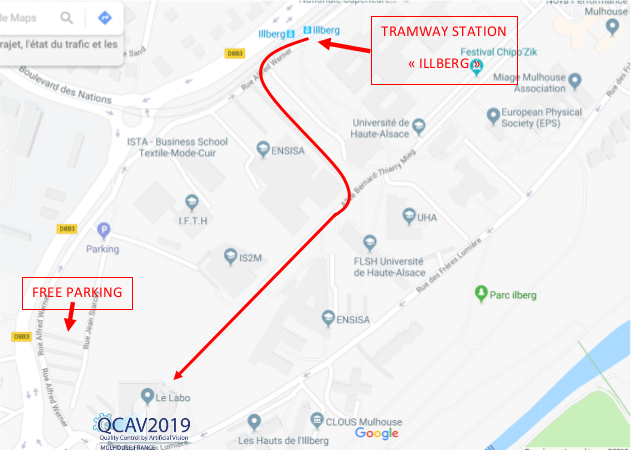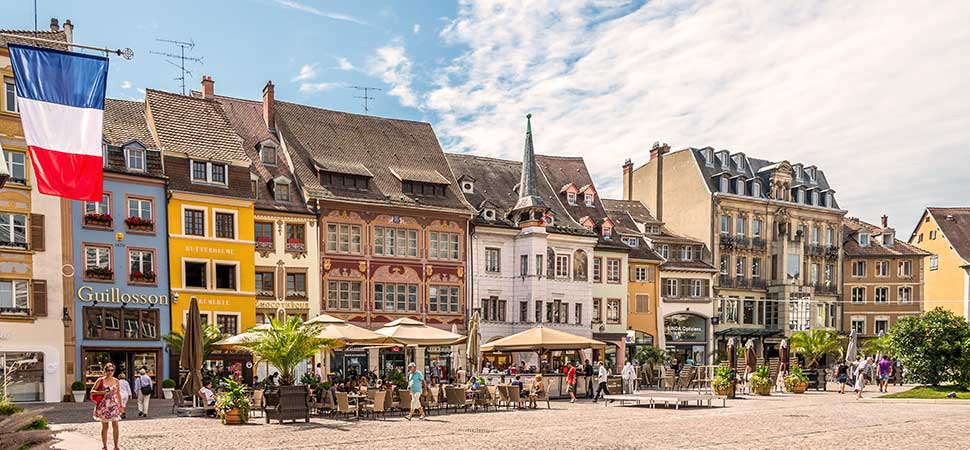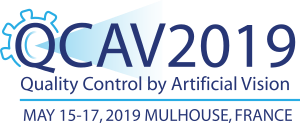Conference Venue
The conference will be held at the Faculté des Sciences et Techniques from the Université de Haute Alsace, Campus Illberg, 18 rue des Frères Lumière, 68350 Mulhouse, France.
From the Bale/Mulhouse Airport to Mulhouse central station (about 45 min)
At the airport, you have to take a dedicated bus to go to the closest city: Saint Louis (in France) where you can take the train to Mulhouse.
Be careful, google maps may advise you to go to Bale to take a train to Mulhouse.
Notice that Bale is in Switzerland.
Take the bus (line 11 ).
Line 11 will bring you in 5 minutes to Saint Louis train station from the airport .
There is a bus every 20 minutes in front of the main exit of the airport. The ticket cost 2,5 euros. See timetable here: https://www.distribus.com/uploads/ligne11.pdf
At Saint Louis train station you can take the train to Mulhouse city.
There is a train every 30 minutes. The ticket cost 10 euros.
From Mulhouse central station to Conference Venue by tramway (about 15 minutes)
The closest tramway stop to go to the Faculté des Sciences et Techniques is the stop Illberg on Line 2. The Faculté des Sciences et Techniques is situated at 3 minutes by walk from the tram stop. Download here some photos to illustrate the way between « Illberg Station » to QCAV 2019, which is located at the FST (faculté de Sciences et Techniques).

From Mulhouse central station to Conference Venue by car (about 10 minutes)
Ask to go to « Rue des Frères Lumière, ENSISA engineer school, or FST. »
From Bale/Mulhouse Airport to Conference Venue by car (about 45 minutes)
Ask to go to « Rue des Frères Lumière, ENSISA engineer school, or FST. »
About Mulhouse
Mulhouse (pronounced [myluz]) is a city in eastern France, close to the Swiss and German borders with a population of 112,063 in 2013 and 284,739 inhabitants in the metropolitan area in 2012, it is the largest city in the Haut-Rhin département, and the second largest in the Alsace region after Strasbourg. Mulhouse is famous for its museums, especially the largest automobile and railway museums in the world. An industrial town nicknamed « the French Manchester ».
Mulhouse’s climate is temperate oceanic, but its location further away from the oceans give the city colder winters with some snow, and often hot and humid summers, in comparison with the rest of France.
Recommended tourist attractions
- Hôtel de Ville (sixteenth century). The town hall was built in 1553 in the Rhenish Renaissance style. It is known for its trompe l’œil paintings, and its pictures of allegories representing the vices and virtues.

- Workers’ quarter (mid 19th century), inspired workers’ quarters in many other industrial towns.
- Place de la Bourse and the building of the Société Industrielle de Mulhouse, in the Nouveau Quartier (19th century)
- Cité de l’Automobile (featuring the Schlumpf collection)
- Cité du Train successor to Musée Français du Chemin de Fer (French National Railway Museum)
- Museum of Electricity (Electropolis)
- Museum of Printed Textiles (Musée de l’impression sur étoffes)
- The Parc Zoologique et Botanique de Mulhouse (botanical garden and zoo)

